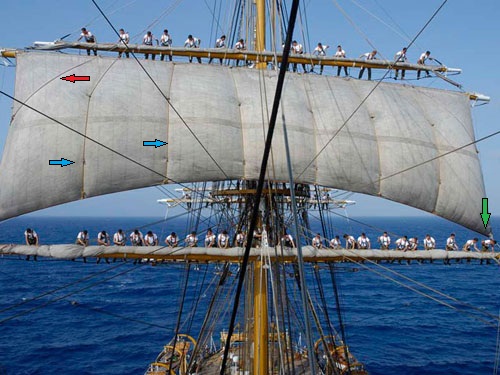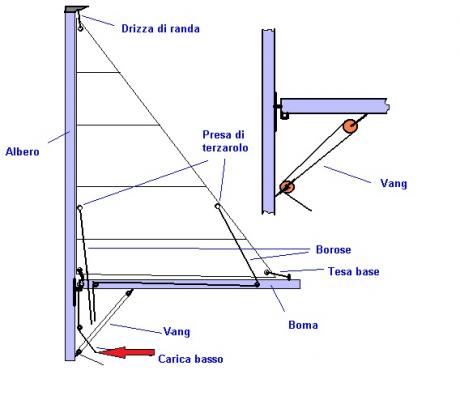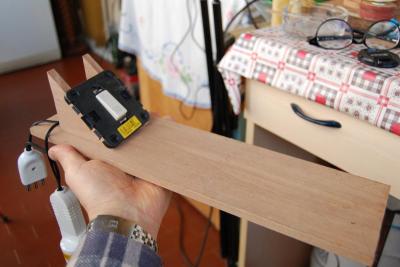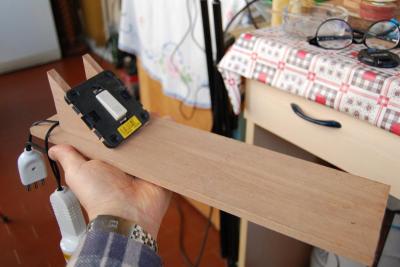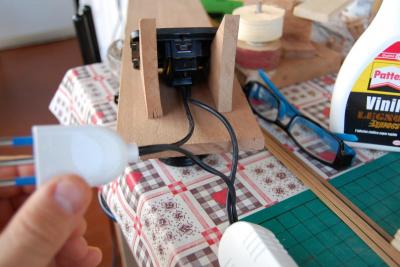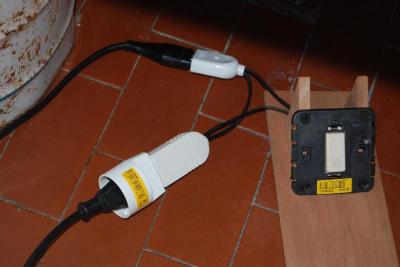-
Posts
67 -
Joined
-
Last visited
Content Type
Profiles
Forums
Gallery
Events
Everything posted by fabius.b
-
Hi Joachim, You're a lucky man. A Mediterranean sailing trip is one of the best experience you can do. Have a good time! (I'm sure of this) I understand your disappointment, but a kit, althought expensive and detailed, can never be so accurate as a personal research and study, from various sources. I can recommand to visit the vespucci, if you can. Is a beautiful experience, and the real souce of information. If you want you can phone at Ufficio Cerimoniale della Marina Militare, to La Spezia (It). They can help you, with the program of Vespucci, and the ports that vespucci will visit, next time. telephone number is: 0039 0178/782337 Fabio
-

ancre Le Fleuron 1729 by rekon54 - 1:24
fabius.b replied to rekon54's topic in - Build logs for subjects built 1501 - 1750
I'm following your log in all the sites where you post. It remains to visit your workshop. I'm so near to you, please, can I see your work live ? Thank you -
Hi Joachim, Strangolacani = is another word to say caricabolina, but also a tipe of slipknot Cappello = is hat, but you must say me the entire sentence. For example "fare cappello" it means when the boat with centerboard turn upside down. I believe in this case, it means a set of cable and pulley, to lift the heaviest part of the bigger sails. Drizza = (plural drizze) are the ropes used to lift the sails, the flagpoles, or the flags Mure = (sing. mura) is a nautical term that means the ship-side from where the wind arrives and is opposite to the direction of the boom. (we say in italian language: "mure a dritta" when the wind blow from right to left and the sails are positioned left from longitudinal axis of the boat - "mure a sinistra" the opposite.) Imbrogli = all the ropes used to close the sails to the flagpole, (caricabolina, caricascotte, caricamezzi, stangolacani, caricabasso, imbrogli di penna, di gola e di sotto) Mustacci = are the bowsprit shrouds Ostini = they are two ropes, fixed to the upper masts (named "picco") of mainsail, when we speak about trapezoidal sails (named "vele auriche"). They serves to direct the "picco" and so , the sail. (you can see the picture below, with vela aurica and picco. The "Ostini" are'nt drawn) bye bye
-
Good idea. I used bottle corks, suitably cutted. I tried also gasket for chair legs, they are made with hard rubber and have the right texture.
-
for male genre singolar : the word ends in -o example: gatto (cat) plural: the word ends in -i example. gatti (cats) female genre: singolar. the word ends in -a example gatta (cat) plural: the world ends in -e example gatte (cats) when we have not genre we must consider the word that you try in dictionary and you discover also the plural word, such as: vela = sail vele = sails albero = mast alberi = masts
-
Hi Joachim, When you see the word “carica” it means uplift, load up, arise, send up The words you did not understand are composed by two words togheter: carica-bolina carica-scotte carica-mezzi carica-basso (alabasso) We are speaking by square sails (eccept alabasso, that is used for triangular sails). They are ropes used to close the lower sail of each mast. Carica-bolina, red arrows in the picture It is fixed and secured around the middle, of the vertical bolt rope of each sail, bilaterally Carica-scotte, green arrows in the picture It is fixed and secured at the extreme lower angle of each sail, bilaterally, to uplift and close every angle of the sail to the center of the flagpole Carica-mezzo, blue arrows in the picture It is fixed in the middle of the bottom edge of the sail, to uplift and close the bottom of the sail to the flagpole Scotte All the ropes, used to tighten the sails towards aft, and keep well open the sail. Square sails had 2 “scotte”, one for each angle. Alabasso or caricabasso: It is a rope into a pulley and serves to pull and tighten down the sliding attachment of the boom, so to tighten the mainsail to mizzenmast (auric sail) Since one picture is better than 100 words, below you can see the crew of Vespucci, closing the mainsail to the flagpole. And in the second picture, the red arrow indicates the alabasso (or caricabasso)
-
we can begin with the 4 principal masts of the Amerigo Vespucci, from bow to stern: albero di bompresso = bowsprit albero di trinchetto = fore-mast albero di maestra = main-mast albero di mezzana =mizzen-mast everyone is composed by 3 sections: bowsprit : only with 4 sections (asta di controfiocco - asta maggiore - bompresso - buttafuori di briglia) Fore-mast lower—Fore topmast—Fore topgallant mast - (trinchetto - parrocchetto - velaccino) Main-mast lower—Main topmast—Main topgallant mast— (maestra - gabbia - velaccio) Mizzenmast lower—Mizzen topmast—Mizzen topgallant mast - (mezzana - contromezzana - belvedere) and now the ship watchword, aka, "motto della nave": "NON CHI COMINCIA, MA QUEL CHE PERSEVERA" (Not who starts, but who perseveres) a link of a very accurate italian site, about masts sail and rigging of Amerigo Vespucci: http://www.mondovespucci.com/ITAL/PAGINE/velealbe.html
-

The drum-type grinding machin №2
fabius.b replied to toly.kol's topic in Modeling tools and Workshop Equipment
Simply fantastic. I'm always amazed by ability of modellers, but Anatoly has a higher-gear. His homemade jigs are beautiful. Very very good job -

The drum-type grinding machin
fabius.b replied to Garward's topic in Modeling tools and Workshop Equipment
I like it very much. With this type of mechanism, you can connect every type of tool. A saw, a disk grinder, a drum and so on. Wonderful. -

What is your favorite hand tool(s)??
fabius.b replied to Modeler12's topic in Modeling tools and Workshop Equipment
I'm a surgeon, and my favourite hand tools are my two lancets, n° 15 and 22. But also haemostat, tweezers, caliper and so on.... -
Good choice, Wouter.
-

bending planks on an old tin can
fabius.b replied to maaaslo's topic in Modeling tools and Workshop Equipment
Bello. I'like it very much. It' simple, fast, cheap. Bravo -
Ok 42rocker, but It's quite expensive . 1200-1400 $, if I don't make a mistake we have to consider a charge of € 150 for DS 230 model and 350 € for DS460 model
-
Hi wouter, I have a Proxxon DS 230 E, and it works very well. Probably maybe a little more expensive, though it is an entry level, but in Italy we say: "Who pays more, pay less" (after)
-
Yes, it's useful wefalck. But I would like to improve it.
-
thanks maaaslo, but I would control by the foot, just like the dentist, when using the drill.
-
Hi folks, I built a pedal switch using a button bell. (as you can see in the pictures under) It works very well, but now I need to turn it in a switch-controller, to control rpm. I don't know how and I do not understand anything of transformers, resistors, etc. Is there anyone could help me, please ? Thanks everybody
-

And one more: Ropewalk for Miniature Ropes
fabius.b replied to wefalck's topic in Modeling tools and Workshop Equipment
This is a little masterpiece. I'm amazed.... -

All my homemade tools
fabius.b replied to sonicmcdude's topic in Modeling tools and Workshop Equipment
The screws seems to be well allocated into the drum IMHO, because the sandpaper make an inner angle.
About us
Modelshipworld - Advancing Ship Modeling through Research
SSL Secured
Your security is important for us so this Website is SSL-Secured
NRG Mailing Address
Nautical Research Guild
237 South Lincoln Street
Westmont IL, 60559-1917
Model Ship World ® and the MSW logo are Registered Trademarks, and belong to the Nautical Research Guild (United States Patent and Trademark Office: No. 6,929,264 & No. 6,929,274, registered Dec. 20, 2022)
Helpful Links
About the NRG
If you enjoy building ship models that are historically accurate as well as beautiful, then The Nautical Research Guild (NRG) is just right for you.
The Guild is a non-profit educational organization whose mission is to “Advance Ship Modeling Through Research”. We provide support to our members in their efforts to raise the quality of their model ships.
The Nautical Research Guild has published our world-renowned quarterly magazine, The Nautical Research Journal, since 1955. The pages of the Journal are full of articles by accomplished ship modelers who show you how they create those exquisite details on their models, and by maritime historians who show you the correct details to build. The Journal is available in both print and digital editions. Go to the NRG web site (www.thenrg.org) to download a complimentary digital copy of the Journal. The NRG also publishes plan sets, books and compilations of back issues of the Journal and the former Ships in Scale and Model Ship Builder magazines.



